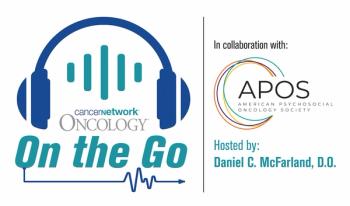
Oncology NEWS International
- Oncology NEWS International Vol 7 No 5
- Volume 7
- Issue 5
Low-Dose Arsenic Leads to APL Remissions
NEW ORLEANS--All acute pro-myelocytic leukemia (APL) patients who took part in a pilot clinical trial of arsenic trioxide went into remission, according to a paper presented at the 89th annual meeting of the American Association for Cancer Research (AACR).
NEW ORLEANS--All acute pro-myelocytic leukemia (APL) patients who took part in a pilot clinical trial of arsenic trioxide went into remission, according to a paper presented at the 89th annual meeting of the American Association for Cancer Research (AACR).
"This is not quite as offbeat an alternative as it sounds," Raymond P. Warrell, Jr., MD, professor of medicine, Memorial Sloan-Kettering Cancer Center, said at a press conference. He stressed that he worked with the Food and Drug Administration each step of the way.
In the late 1980s, Chinese researchers reported success in treating APL patients with arsenic. Dr. Warrell and his colleagues began in 1994 to try to replicate this work. He first used melarsoprol (an arsenic compound used to treat sleeping sickness), but found it too toxic. He next tried arsenic trioxide.
Eleven APL patients took part in the study. All had failed extensive prior therapy, including, for some subjects, bone marrow transplantation. Each received a daily infusion of arsenic trioxide until he or she achieved bone marrow remission. The daily doses ranged from 0.07 to 0.20 mg/kg. Four to 6 weeks later, each patient received another 25 days of arsenic trioxide. These 25-day courses of therapy are repeated every 4 to 6 weeks.
Ten patients (eight adults and two children) have been in the study long enough to be evaluated. "To make a long story short, the complete remission rate is 100%," Dr. Warrell said. All signs of APL disappeared. But, he said, "we want to emphasize that this is not a cure." Six patients were tested for molecular evidence of leukemia. Two were still positive, and both later relapsed and died.
Dr. Warrell and his colleagues have watched the patients carefully for toxic effects. He has found the low doses used to be well tolerated. Patients have only mild side effects, but do find the hours-long daily infusions quite tedious. Some have received 3 courses of therapy over 5 months, with no long-term effects seen.
Dr. Warrell said their next steps would be to fine-tune the dosage and try to find a more convenient schedule. He also plans to test arsenic in combination with other anticancer drugs.
Articles in this issue
over 27 years ago
Risk Assessment: Who Should Have BRCA Gene Testingover 27 years ago
Panel Supports Approval of Label Expansion for Ceprate SC Systemover 27 years ago
NCI Office Focuses on Minority Accrual in Cancer Clinical Trialsover 27 years ago
Increased Folate Level Appears to Lower Colon Cancer Riskover 27 years ago
Cluster of Risk Factors May Predict Increased Risk of Colon Cancerover 27 years ago
Colon Cancer Prevention Fits Into Healthy Lifestyleover 27 years ago
When to ‘Walk Away’ from a Managed Care Contractover 27 years ago
Nutritional Assessment ‘Vital,’ but Still Difficult to Doover 27 years ago
Prevention Research Needs to ‘Go Mainstream’over 27 years ago
Hyperthermia May Stimulate Immune SystemNewsletter
Stay up to date on recent advances in the multidisciplinary approach to cancer.





















































































